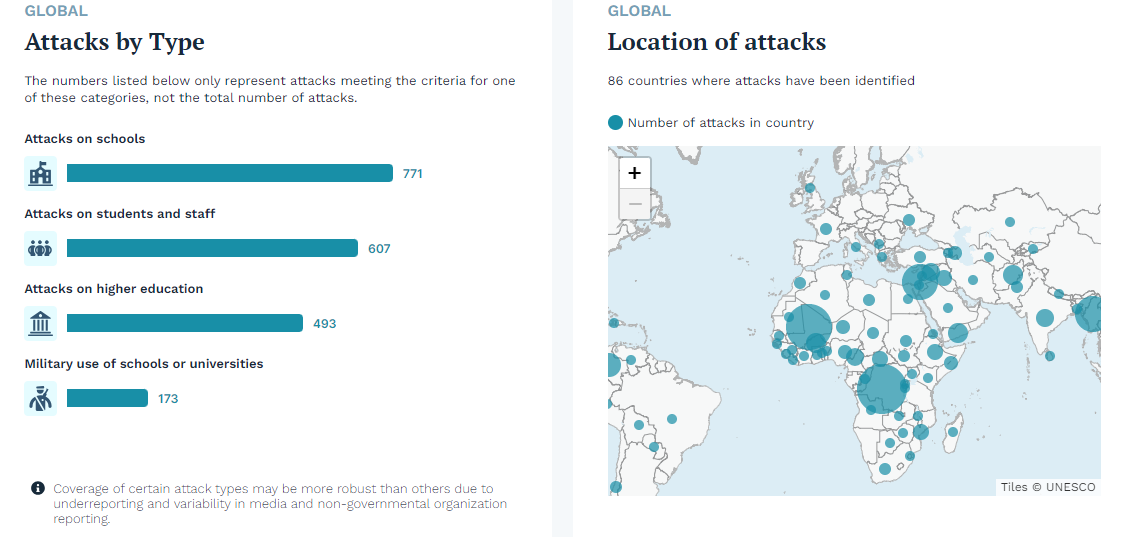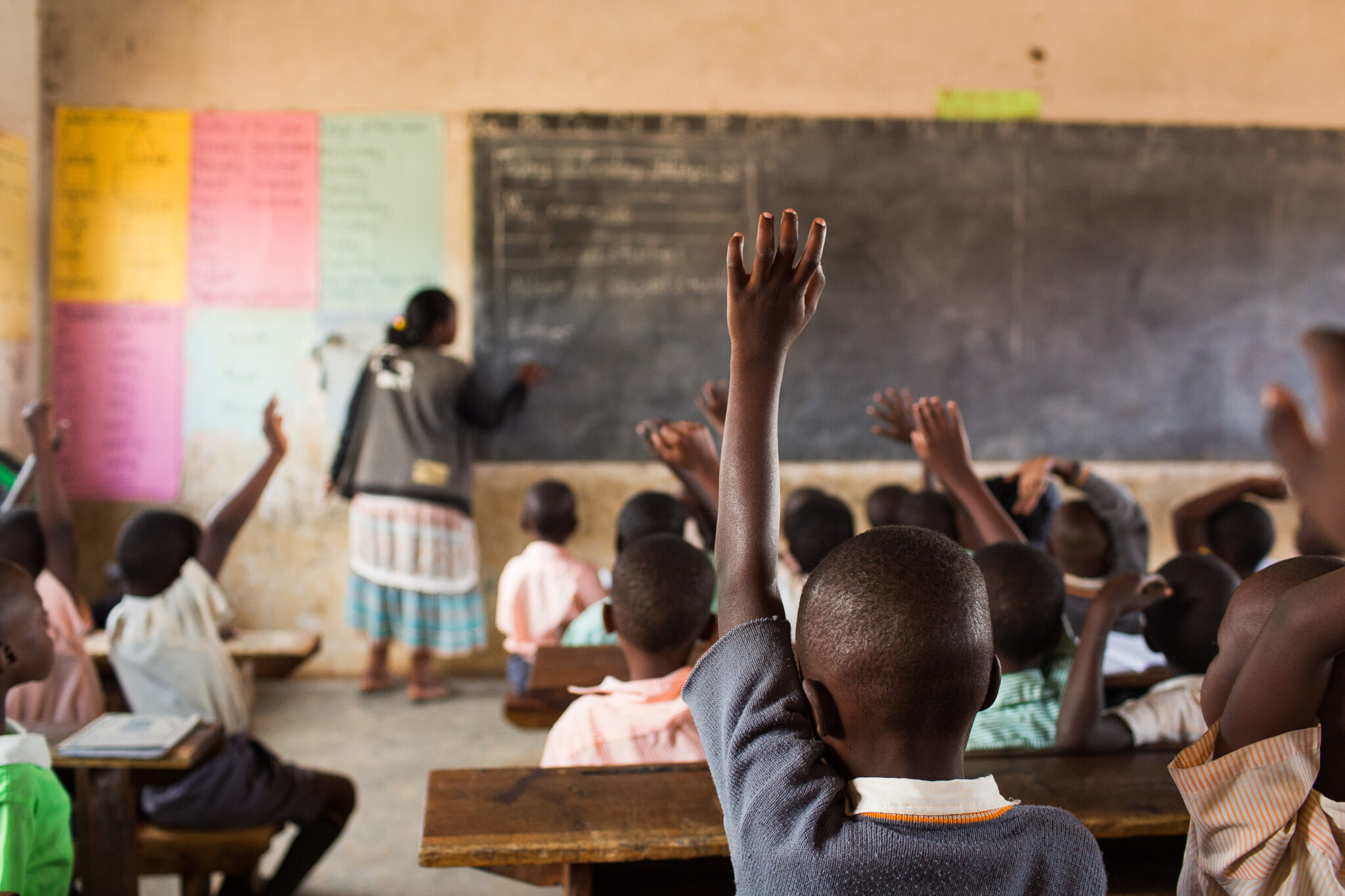Back to school in September for many, but not for all. According to Unesco (United Nations Educational, Scientific and Cultural Organisation), 244 million young people between the ages of 6 and 18 are not in school and 771 million adults are illiterate. Even today, less than 40 per cent of girls in sub-Saharan Africa complete eighth grade, and some four million young refugees are out of school.
Not attending school not only affects education, because a boy or girl not in school is more vulnerable to trafficking, military recruitment, early marriage, teenage pregnancy and child labour. In fact, it is estimated that if all girls completed secondary school, there would be 49 per cent fewer child deaths, 64 per cent fewer early marriages, 59 per cent fewer teenage pregnancies and they would earn up to 45 per cent more than an uneducated woman. Education is also a key factor in social and economic development. According to the World Bank, each additional year of education is associated with a 9% increase in hourly wages.
* On the cover image by Boxed Lunch Productions on Shutterstock. Below is a graphic on military attacks on schools from the Global Coalition to Protect Education from Attack

Attacks on schools are increasing
In 2022, there was a 112% increase in armed attacks against schools and hospitals compared to 2021. The worst affected countries were Ukraine, Burkina Faso, Israel, Palestine, Myanmar, Mali and Afghanistan. In Afghanistan alone, the UN verified 95 attacks: 72 against schools and 23 against hospitals.
While non-state armed groups were responsible for 50% of serious violations, government forces were primarily responsible for killing and maiming children, attacking schools and hospitals, and denying humanitarian access. One of the most serious factors was the use of explosive weapons, particularly in populated areas such as Gaza, Syria, Ukraine and Yemen.
In 2020 and 2021, more than 5,000 attacks on education and incidents of military use of schools and universities were reported, affecting more than 9,000 students and educators in at least 85 countries. On average, there were six attacks on education every day. According to the Global Coalition to Protect Education from Attack, more than 14,500 reports of attacks on education or military use of educational facilities were recorded worldwide between 2017 and 2022. More than 28,000 students, teachers and academics were injured, killed or damaged in attacks carried out in situations of armed conflict or insecurity.
Attacks on education violate international humanitarian and criminal law and may constitute war crimes under the 1907 Hague Regulations, the 1949 Geneva Conventions and their Additional Protocols, the Rome Statute of the International Criminal Court, and customary international humanitarian law.

The most and least educated
According to the Wittgenstein Centre, just under 10% of the world’s population over the age of 15 have no formal education, i.e. they have not attended or completed the first year of primary school. About 10% of people have completed primary education (from kindergarten to age 11 or 12) and a further 5% have incomplete primary education. Nearly 40% of the world’s population has completed lower or upper secondary education, usually between the ages of 11 or 12 and 18 or 19. The remaining 12% of the world’s population has more than a secondary education, compared with only 1% in 1950. People with higher levels of education tend to enjoy better health and general well-being.
According to the United Nations Development Programme (UNDP), a child spends an average of 12.8 years in school or university. Australians spend the most time in the education system with 21.1 years of expected schooling. This is followed by New Zealand (20.3 years) and Greece (20 years). Only 5.5 years are spent in school in South Sudan, 6.9 in Niger and 7.4 in Mali.
Who does what
The Global Coalition to Protect Education from Attack
The Global Coalition to Protect Education from Attack (Gcpea) is a coalition formed in 2010 to address the problem of targeted attacks on education during armed conflict. The coalition, which includes organisations such as Amensty International, Save the Children, Unicef, Human Right Watch and Unesco, defines an attack on education as any actual or threatened use of force against students, teachers, academics, educational support and transport staff, school officials, school buildings, resources or facilities (including school buses). The definition also includes the use of schools and universities for military purposes, putting them at risk of attack and denying students access to education. “Such attacks,” they write, “reduce the quality of education and have devastating long-term consequences for society; they also have a particular impact on girls and women, marginalised communities and other groups.
The Global Coalition is compiling the Education under Attack database, which monitors attacks on schools, universities, students and educators and reports the data on a web portal accessible to all.
FOCUS 1 Goal 4 of the 2030 Agenda
Goal 4 of the 2030 Agenda aims to ensure that all children, youth and adults, especially the most marginalised and vulnerable, have access to education and training that is relevant to their needs and the context in which they live; it is not limited to primary education for children, but also focuses on the intersection between basic education and vocational training, and emphasises equity and quality in education with a view to lifelong learning.
According to the UN Agenda for Action, primary school enrolment in developing countries has reached 91%, but 57 million children are still excluded. More than half of the out-of-school children live in sub-Saharan Africa. It is also estimated that 50% of children of primary school age who are out of school live in conflict-affected areas. Finally, 103 million young people lack basic literacy skills: over 60% are women.
FOCUS 2 Where the most is spent on education
Around USD 5 trillion will be spent on education in 2020 (4.33% of GDP). In the same year, around USD 9 trillion was spent on health and almost USD 2 trillion on armed forces. According to Unesco, high-income countries spent almost twice as much on education as low-income countries.
In 2020, the United States spent about 6.05% of its GDP on education, while Bolivia spent 9.84%, the highest in South America. In Africa, on the other hand, it was Namibia that spent the most on education, with 9.64% of its GDP. In Asia, Saudi Arabia invested the most at 7.81%. In Europe, Greenland devoted 10.5% of its GDP to education, almost double the EU average of 5%.


















